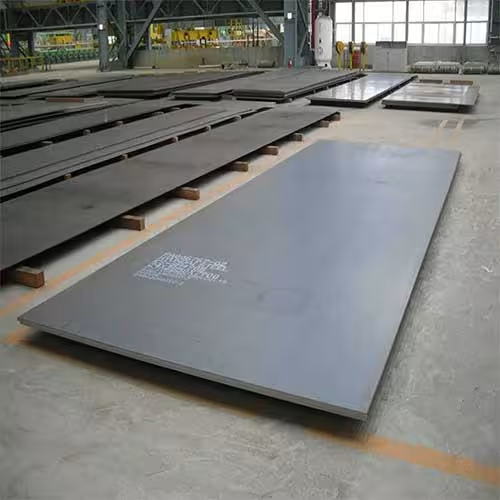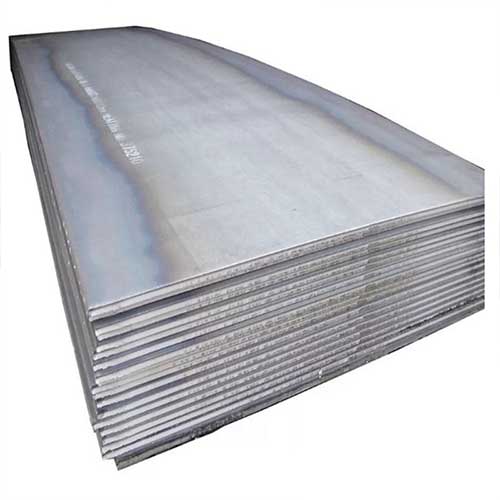Welcome to My Blog!
Before we dive into the content, I’d love for you to join me on my social media platforms where I share more insights, engage with the community, and post updates. Here’s how you can connect with me:
Facebook:https://www.facebook.com/profile.php?id=61565500692293
Now, let’s get started on our journey together. I hope you find the content here insightful, engaging, and valuable.
Table of Contents
Introduction

Carbon steel plates are essential materials used in a variety of industries, ranging from construction and manufacturing to automotive and aerospace. The versatility, strength, and affordability of carbon steel make it a popular choice for a wide range of applications.
In this comprehensive guide, we will dive into the various types of carbon steel plates, their characteristics, benefits, and how to choose the right one for your project. By the end of this article, you will have a clearer understanding of the different types of carbon steel plates and how they can be used in various industrial applications.
What is Carbon Steel Plate?
Definition of Carbon Steel Plate
Carbon steel plate is a flat piece of steel made primarily from carbon and iron, with small amounts of other elements like manganese, phosphorus, sulfur, and silicon. The carbon content in these plates typically ranges from 0.05% to 2%, and it significantly influences the material’s properties. The higher the carbon content, the harder and stronger the steel plate becomes, but it also becomes more brittle.
Carbon steel plates are known for their strength, hardness, and wear resistance. They are used in a wide array of applications, from structural components to machinery and even consumer products.
Characteristics of Carbon Steel Plate
- Strength: Carbon steel plates are known for their high tensile strength, making them ideal for load-bearing applications.
- Durability: These plates have a long lifespan, making them highly reliable in heavy-duty applications.
- Corrosion Resistance: Although carbon steel is not as resistant to corrosion as stainless steel, it can be treated to enhance its durability.
- Versatility: Carbon steel plates can be cut, welded, and shaped into a variety of forms, making them versatile for different projects.
Types of Carbon Steel Plates


Low Carbon Steel Plate
Low carbon steel plates typically contain 0.05% to 0.3% carbon content, making them the most malleable and ductile type of carbon steel. These plates are ideal for applications that require high formability, such as in the construction of tanks, pipes, and general manufacturing.
Advantages of Low Carbon Steel Plate
- Easier to Weld and Form: Low carbon content makes the material more malleable and easy to shape.
- Cost-Effective: This type of carbon steel is relatively inexpensive compared to higher carbon steels.
- Good for Cold Working: Low carbon steel can be easily cold-worked into various shapes and sizes.
Applications of Low Carbon Steel Plate
- Automobile Manufacturing: Used in the production of car bodies and frames.
- Construction: Ideal for structural steel used in buildings and bridges.
- Manufacturing: Used in making various machinery components.
Medium Carbon Steel Plate
Medium carbon steel plates contain 0.3% to 0.6% carbon content. These plates offer a balance between strength and ductility, making them suitable for applications that require a combination of hardness and formability. They are often used in the automotive industry and in the production of heavy-duty machinery.
Advantages of Medium Carbon Steel Plate
- Higher Strength: Provides higher tensile strength compared to low carbon steel.
- Improved Wear Resistance: The higher carbon content increases the hardness and wear resistance of the plate.
- Good for Heat Treatment: Can be heat treated to enhance properties like strength and hardness.
Applications of Medium Carbon Steel Plate
- Heavy Equipment Manufacturing: Used for machinery components like shafts, gears, and cranks.
- Construction: Used in structures that require a combination of strength and formability.
- Automotive: Used in the manufacturing of car components that require higher strength.
High Carbon Steel Plate
High carbon steel plates contain 0.6% to 1.5% carbon content and are known for their hardness and high tensile strength. These plates are more brittle than lower carbon steels but are suitable for applications that require high durability and wear resistance. High carbon steel is commonly used in manufacturing cutting tools and machinery parts.
Advantages of High Carbon Steel Plate
- High Hardness: Provides exceptional hardness and wear resistance.
- Toughness: Can withstand high levels of stress and impact.
- Improved Durability: Ideal for high-stress applications due to its excellent strength-to-weight ratio.
Applications of High Carbon Steel Plate
- Cutting Tools: Used for the production of tools like blades, saws, and knives.
- Industrial Equipment: Suitable for machinery parts that experience heavy wear and tear.
- Spring Manufacturing: Commonly used in the production of springs and other high-stress components.
Ultra-High Carbon Steel Plate
Ultra-high carbon steel plates contain more than 1.5% carbon content and are known for their extreme hardness and wear resistance. Due to their high carbon content, these plates are less common and are used only in specialized applications that require exceptional strength and resistance to abrasion.
Advantages of Ultra-High Carbon Steel Plate
- Maximum Hardness: Offers the highest hardness and wear resistance of all carbon steel plates.
- Wear Resistance: Ideal for parts subjected to extreme conditions of abrasion and impact.
- Durability: Can withstand significant wear and tear without breaking down.
Applications of Ultra-High Carbon Steel Plate
- Heavy Duty Industrial Equipment: Used in components that need to withstand extreme wear and tear.
- Mining Equipment: Ideal for parts used in the mining industry, where high abrasion resistance is required.
- Cutting Tools: Used for extremely durable cutting tools and blades.
Comparison Table: Types of Carbon Steel Plates
The table below compares the key characteristics and applications of the different types of carbon steel plates:
| Type of Carbon Steel Plate | Carbon Content | Strength | Ductility | Common Applications |
|---|---|---|---|---|
| Low Carbon Steel Plate | 0.05% – 0.3% | Moderate | High | Construction, Automotive, Manufacturing |
| Medium Carbon Steel Plate | 0.3% – 0.6% | High | Moderate | Heavy Equipment, Automotive, Construction |
| High Carbon Steel Plate | 0.6% – 1.5% | Very High | Low | Cutting Tools, Industrial Equipment, Springs |
| Ultra-High Carbon Steel Plate | 1.5%+ | Extremely High | Very Low | Mining Equipment, Heavy Industrial Equipment |
How to Choose the Right Carbon Steel Plate for Your Project

Choosing the right carbon steel plate depends on several factors, including the strength requirements, corrosion resistance, and formability needed for your project. Here are some steps to help guide your decision:
- Consider the Application: Determine whether you need high strength, high formability, or high wear resistance.
- Assess the Environment: Consider whether the steel will be exposed to extreme temperatures, moisture, or corrosive substances.
- Evaluate the Cost: Higher carbon steels tend to be more expensive, so assess your budget and project needs.
Conclusion
Carbon steel plates are crucial in various industries, with different types offering distinct advantages based on their carbon content. Whether you need low carbon steel for easy formability or high carbon steel for extreme hardness and durability, selecting the right type is key to ensuring the success of your project.
By understanding the differences in carbon steel plate types and their applications, you can make an informed choice that aligns with your specific needs.
FAQ
What is the difference between carbon steel and stainless steel?
Carbon steel contains a higher amount of carbon, making it stronger and more rigid, but less resistant to corrosion compared to stainless steel, which contains chromium for improved corrosion resistance.
Can I use high carbon steel for welding?
High carbon steel can be welded, but it requires special precautions, such as preheating and post-weld heat treatment, due to its brittleness.
Is carbon steel plate more affordable than stainless steel?
Yes, carbon steel plates are typically more affordable than stainless steel plates, making them a cost-effective option for many applications.
Can low carbon steel be used for cutting tools?
Low carbon steel is generally too soft for cutting tools, and higher carbon content is required for the hardness needed in cutting applications.
What is the lifespan of carbon steel plates?
The lifespan of carbon steel plates depends on factors such as the application, environment, and maintenance. When properly maintained, carbon steel plates can last for decades.

